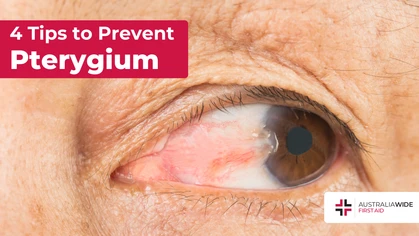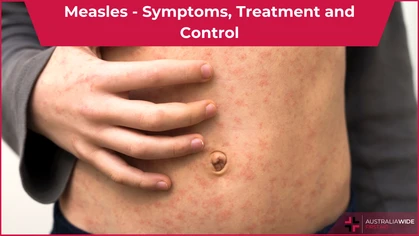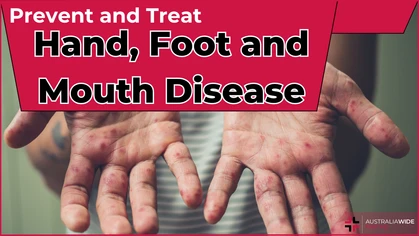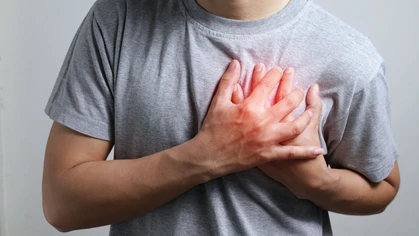Risk Factors for Heart Disease

Disease
 The more risk factors you have for coronary heart disease, the greater your chance of developing it. In Australia, 90% of people have at least one risk factor for heart disease.
The more risk factors you have for coronary heart disease, the greater your chance of developing it. In Australia, 90% of people have at least one risk factor for heart disease.
Risk Factors for Heart Disease
Many of those risk factors can be controlled or improved, including:- Being inactive
- Being overweight
- Diabetes
- High Blood Pressure
- High cholesterol
- Smoking
- Unhealthy diet
- Age. The risk of heart disease increases as you get older.
- Ethnic background. For example, higher risks are linked to lifestyle factors for Aboriginal and Torres Strait Islander people. People from the Indian sub-continent have a higher risk profile for heart disease.
- Family history. If a family member has cardiovascular disease, it would be wise to discuss the risks with a doctor.
- Gender. Males have a higher risk of heart disease. The risks increase for women and after menopause, equalling that of men in some cases.
Smoking
Heart attack risk almost doubles for smokers, compared with people who never smoked. Smoking damages the lining of the arteries. This leads to build-up of fatty material (atheroma) narrowing the artery, which can cause angina, a heart attack or a stroke. The heart will also work harder to supply the body with oxygen due to carbon monoxide in tobacco smoke. The heart beat quickens and blood pressure rises due to nicotine stimulating production of adrenaline. Within 10 minutes of smoking a cigarette, the blood becomes sticky — that is, the platelets and proteins that help blood to clot, become sticker than normal. This can lead to dangerous blood clots and heart attack, even in people in their 30s and 40s. Research shows that passive smoking — exposure to second-hand tobacco smoke — is a cause of heart disease in non-smokers, among them, children, partners and friends. It’s never too late to quit smoking. Ask your doctor or health practitioner about helping you quit smoking. You can also call Quitline (137 848) or visit the Quit website.High Blood Pressure
High blood pressure – or hypertension – is when blood pressure rises consistently above the normal level. Blood pressure in the arteries is what enables the blood to be pumped around the body. To handle the pressure, the arteries are strong and elastic. Blood pressure is represented by systolic (the higher number) over diastolic. This translates to pressure in the arteries as the heart contracts, over the pressure as it relaxes, e.g. 100/70 (100 over 70). Blood pressure varies according to the body’s needs and activities, but normal blood pressure is between 100/60 and 130/80. Rather than being a number pairing, acceptable blood pressure falls within a range. High blood pressure is often referred to as ‘silent killer’. The only way to know if you have it is to regularly test for it. Left untreated over time, high blood pressure can cause the heart to become enlarged and pump less effectively. This can lead to heart failure, increasing the chances of heart attack or stroke. High blood pressure, especially if persistent, needs to be controlled and therefore needs to be checked regularly.What can be done to reduce blood pressure?
After diagnosing high blood pressure, doctors would encourage lifestyle changes to help reduce it, such as getting into more physical activity, losing weight, and eating a balanced, healthy diet with reduced intake of salt and alcohol. Doctors might also prescribe medication to control high blood pressure.High Cholesterol
Cholesterol is a fatty substance found in the blood. Your body makes it and it can also be found in food sourced from animals. Excess cholesterol can build up to form plaque between layers of the artery walls. This makes it more difficult for blood to circulate and increases the risk of heart disease and other cardiovascular diseases. With the high incidence of such diseases, it’s no coincidence that doctors include cholesterol counts in their check-ups.Cholesterol types
High density lipoprotein (HDL) is often referred to as ‘good’ cholesterol. It helps remove other forms of cholesterol from the bloodstream by carrying it back to the liver to be processed. Higher HDL levels are associated with lower risk of heart disease. Low density lipoprotein (LDL), notoriously the ‘bad’ cholesterol, can leave fatty deposits (plaque) on the lining of arteries and lead to cardiovascular disease. Higher LDL increases your risk of developing heart disease or a stroke.What causes high cholesterol?
Many different factors contribute to high cholesterol, including:- a diet high in saturated fat
- hereditary hypercholesterolaemia
- high alcohol intake
- kidney or liver disease
- lack of physical activity
- smoking
How do I lower cholesterol levels?
Healthy eating choices and exercise both help decrease cholesterol levels. Cholesterol-lowering medication is prescribed for some people to reduce the risk of heart attack.Diabetes
A new case of diabetes is diagnosed in Australia every 5 minutes. Marked by high levels of sugar (glucose) in the blood, diabetes increases the likelihood of coronary heart disease. Diabetes is a chronic disease that affects how the body transforms food into energy. Normally, the sugar produced as food breaks down in the body is released into the bloodstream as glucose. As blood sugar goes up, the pancreas releases insulin to allow glucose into your body’s cells for use as energy. Insulin is created in the beta cells of the pancreas, which creates enzymes to break down fat, starches, and sugar in food. Beta cells comprise about 75% of pancreatic hormone cells.Types of diabetes
Type One Diabetes occurs when the body cannot make insulin. Type One usually affects children and young adults. Type Two Diabetes occurs when the body cannot produce enough insulin or the insulin is not doing its job. Type Two is more common and tends to develop gradually with age — usually 40 and older — and is closely linked with:- family history of diabetes
- overweight
- physical inactivity
How to reduce the risk of developing diabetes
Controlling weight and regular physical activity can reduce the risk of developing Type Two Diabetes. At the same time, this will help avoid other cardiovascular diseases, such as coronary heart disease and stroke.What if you already have diabetes?
Diabetics need to control their blood sugar, blood pressure and cholesterol levels to help reduce the risk of coronary heart disease and other cardiovascular disease. It is advised to:- control weight, and
- eat healthy, balanced diet
- increase physical activity
- quit smoking
Physical Inactivity
Physical inactivity is second only to smoking in terms of heart disease risk. More than 65% of Australians aged 18 and over are sedentary or lacking regular exercise. Compared to people who are active, those who are physically inactive are at almost double the risk of coronary heart disease. Regular physical inactivity helps control weight and reduces blood pressure and cholesterol. It’s also good for mental health. Physical activity recommendations for Australian adults are as follows:- Any physical activity is better than none. Start modestly then build up.
- Undertake physical activity every day, preferably.
- Aim for 2.5 to 5 hours of moderate intensity physical activity each week, or 1.25 to 2.5 hours of vigorous physical activity each week.
- Undertake muscle strengthening activities at least 2 days a week.
- Each day, do 30-45 minutes of moderate-intensity physical activity (such as brisk walking). To make it easier, build toward this with say, three 10-minute walks.
- Twice a week, do muscle-toning activities, such as push-ups, squats, lunges, or gym-based weights or resistance training. Gardening and carrying shopping, will get you digging, lifting and carrying.
Being Overweight
Carrying excess body fat is a risk factor for heart disease. It can also increase your risk of chronic disease, such as diabetes. In Australia, 1 in 4 children and 2 in 3 adults are overweight or obese. Being overweight is shown by research to:- Increase blood cholesterol levels
- Increase blood pressure
- Increase the risk of developing type 2 diabetes
How to Prevent Heart Disease
Keeping your heart healthy is the most important thing you can do to help prevent and manage heart disease. This advice applies, no matter your age. It won’t matter if you have more than one risk factor, you can still make the following changes to help reduce the chances of developing heart problems. Choose sensibly when it comes to the food and drink you consume. Minimise sedentary behaviour and instead, embark on a more physically active course. Improving your diet and level of fitness are lifestyles choices that have positive health outcomes. Being more active and enjoying a healthier diet will also have the benefits of making you feel better about life in general, including yourself. Disclaimer: This article is for informational purposes only. It does not constitute, replace, or qualify as any form of first aid training.
Originally published at
https://www.australiawidefirstaid.com.au/resources/risk-factors-for-heart-disease
as part of the Australia Wide First Aid Articles Library









